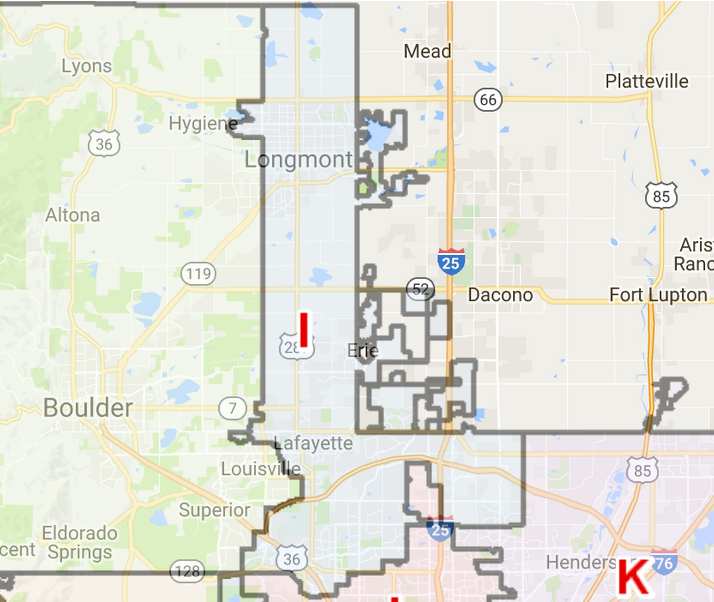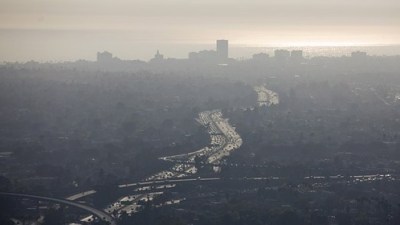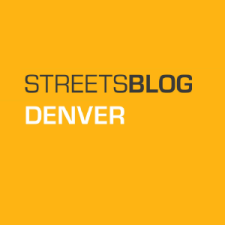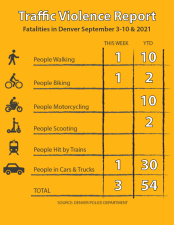RTD District I Candidate Judy Lubow: Finish FasTracks and Grow Ridership
Even people who use Denver’s transit system daily might be surprised to find out that a publicly elected board of directors oversees the Regional Transportation District. It’s true.
The 15-member RTD Board of Directors reps constituents from all over the map, literally, and makes decisions that affect Coloradans — in some ways more directly than the president. Eight seats are up for grabs this November 8.
Streetsblog wants you to be informed when you decide who fills those seats, so we’ve been publishing interviews with candidates leading up to Election Day. (Hat tip to Transit Alliance for the footage from a closed candidate forum last month.)
Next up: Judy Lubow. Lubow is the incumbent from District I, which covers Lafayette and parts of Broomfield, Erie, Longmont, unincorporated Adams County, and Boulder County. Her opponents are Véronique Bellamy and Lee Kemp.
- Most used RTD route: L (owns a car)
- Day job: RTD Director, District I
- Lives in: Longmont
- Website
Why are you running?
Basically because there’s been some progress on the Northwest Rail issue, and I’ve been trying so hard to try to get some movement forward on our corridor. Because there was progress, I just felt it’s not the right time for me to leave.
What type of progress?
It’s very exciting. There is an idea — a cost-saving idea — being evaluated now that was not open for evaluation before because stakeholders were basically just interested in full service immediately. But the money’s been spent and we’re the major corridor that has been left behind.
To get full service would cost quite a bit of money up front, immediately. It would be much more sensible, I would think, to do what other transit agencies have done, who have mixed commuter lines with freight companies. They started at rush hour — they didn’t demand the full day service — and they established it, which is much cheaper than a full day service. You start building your ridership, you start getting more money, and then you build out your service.
Is your platform more extensive than Northwest Rail?
I’ve never promised that I will get the rail; I’ve always promised that I will work very hard for it, and that’s the promise that I continue to make.
But clearly, rail is not everything. And I’ve been on the board and I really see that now — that buses are incredibly important to a lot of people. It’s very important to make sure that you have decent transit not just with rail, but also with bus. And not just ordinary bus. Now there’s the concept of bus rapid transit, which is taking off too. It’s all very important. I’m a “New Deal” Democrat. I believe that the government can and should be for the good of people. And if government promises to do something, it’s shocking to me if it just doesn’t.
Why should someone vote for you instead of your opponents?
I’m the one who’s got the feet on the ground now. I am knowledgeable about the issues, the parties involved, the history of the issues. What’s been going on with negotiations. What’s been going on with transit in the district the last few years. Others don’t really know that to the same degree that I do because I’ve been there.
The other thing is that I’m an attorney, and I’ve worked for the federal government for almost 30 years, so I’m used to dealing with policy issues, and I’m used to taking a large picture and weighing pros and cons and realizing that it’s not simple — that quite often it’s complicated and you have to make hard decisions. And I don’t think all of the opponents in this case understand that.

What are RTD’s shortfalls?
The main thing that I want to work on if I get elected, in addition to finishing FasTracks, is increasing transit ridership. And what I’m talking about is not what I consider to be an artificial goal — like we’re gonna increase ridership by 2 percent or something. I’m talking about a real analysis of how other transits have increased ridership sustainably, and then doing pilot projects to make sure that we can do it sustainably.
How does RTD grow ridership?
I personally believe it should be part of our mission statement and I’m gonna push that. And we’re not gonna do that unless transit is more attractive to people. I’ve seen what Boulder County has done, and they have gone into the community and helped them figure out what would be a way to increase ridership. A particular route? Giving more frequency? They’ve worked with those communities to get grants to try pilots. For instance, Nederalnd now has a pass for all the people in Nederland. They got a pilot project going, and the people of Nederland went and voted for it.
Do you think RTD’s fares are affordable?
I was on the board when we had the Affordable Fares Task Force. And for about a year I heard people come forward and say that there is a strata of people for whom the fares are just too high, basically for the working poor. They’re too high and they cause a great deal of personal trouble for them. So that saddens me. I suspect for the rest of the people that the fares are okay. So I think it really depends on your income status.
I don’t know if I would say RTD has a responsibility to make sure everyone can afford to ride, but I do believe this is our business — ridership — and we should do what we can to make the fares as affordable as possible. And by the way, affordability is not part of the mission statement either.
How can RTD create more revenue?
Naming rights — which I do have mixed feelings about — but we need money. If we were in the best of all worlds, I personally wouldn’t want to see private names on public facilities. It’s just not my preference, but I think we need new revenue streams so we have to make sure they’re appropriate.
I’m using an idea from another board member, but in the future Amazon maybe isn’t gonna be using the Postal Service, so maybe they would want to piggy back with us on our FasTracks. It may not be possible, but being open to newness makes sense.
What about charging for parking at park-and-rides? Right now low-income, car-free riders are subsidizing people wealthy enough to own a car and drive to a station.
Oh yes — that’s being evaluated. It’s an ongoing relationship, working with the legislature to hopefully do things that benefit the public. One thing I can tell you is that there will be howls of protest. I think we would have to tread very gingerly.
There are definitely arguments to be made that it is an equity issue. I’m sure to the people who have always parked for free, they don’t feel like they’re being subsidized — this is just something that they have always had. And I think the legislature basically wanted them to always have that. It would be a sea change to change that, and I’m not saying it shouldn’t happen, but I’m just saying to the people who have never had to pay, they would argue with you about it.
How do you balance the needs of your district with the needs of the system as a whole?
With difficulty. It becomes complex. And that really comes to the fore if your region hasn’t gotten what it’s been promised, while at the same time other regions are getting it, and you have to vote on financing. It’s not as if you don’t want the other districts getting what they’ve been promised. It’s not as if you want to not be a regionalist. It’s very difficult. You do your best.


